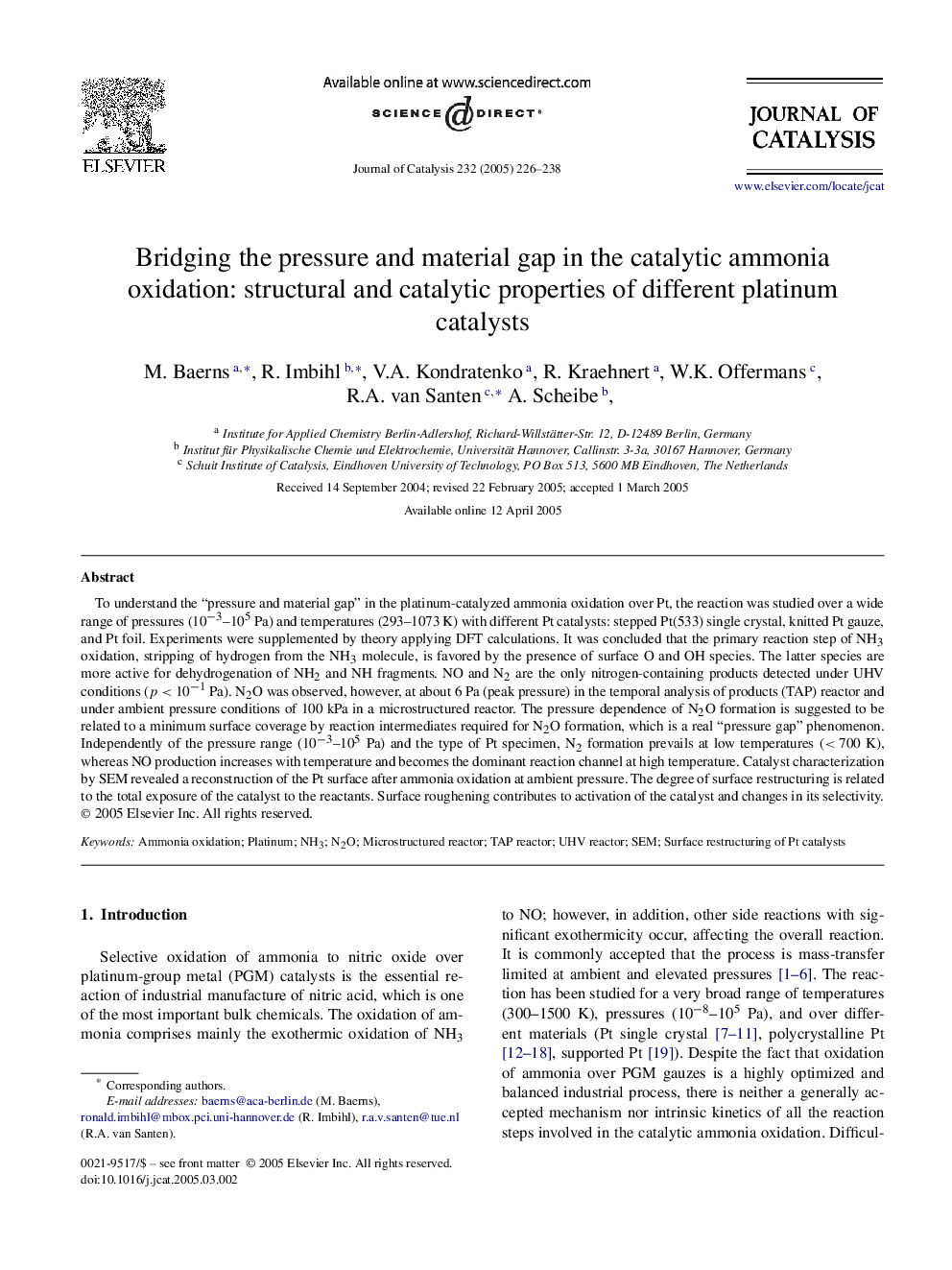| کد مقاله | کد نشریه | سال انتشار | مقاله انگلیسی | نسخه تمام متن |
|---|---|---|---|---|
| 10244855 | 47706 | 2005 | 13 صفحه PDF | دانلود رایگان |
عنوان انگلیسی مقاله ISI
Bridging the pressure and material gap in the catalytic ammonia oxidation: structural and catalytic properties of different platinum catalysts
دانلود مقاله + سفارش ترجمه
دانلود مقاله ISI انگلیسی
رایگان برای ایرانیان
کلمات کلیدی
موضوعات مرتبط
مهندسی و علوم پایه
مهندسی شیمی
کاتالیزور
پیش نمایش صفحه اول مقاله

چکیده انگلیسی
To understand the “pressure and material gap” in the platinum-catalyzed ammonia oxidation over Pt, the reaction was studied over a wide range of pressures (10â3-105Pa) and temperatures (293-1073 K) with different Pt catalysts: stepped Pt(533) single crystal, knitted Pt gauze, and Pt foil. Experiments were supplemented by theory applying DFT calculations. It was concluded that the primary reaction step of NH3 oxidation, stripping of hydrogen from the NH3 molecule, is favored by the presence of surface O and OH species. The latter species are more active for dehydrogenation of NH2 and NH fragments. NO and N2 are the only nitrogen-containing products detected under UHV conditions (p<10â1Pa). N2O was observed, however, at about 6 Pa (peak pressure) in the temporal analysis of products (TAP) reactor and under ambient pressure conditions of 100 kPa in a microstructured reactor. The pressure dependence of N2O formation is suggested to be related to a minimum surface coverage by reaction intermediates required for N2O formation, which is a real “pressure gap” phenomenon. Independently of the pressure range (10â3-105Pa) and the type of Pt specimen, N2 formation prevails at low temperatures (<700K), whereas NO production increases with temperature and becomes the dominant reaction channel at high temperature. Catalyst characterization by SEM revealed a reconstruction of the Pt surface after ammonia oxidation at ambient pressure. The degree of surface restructuring is related to the total exposure of the catalyst to the reactants. Surface roughening contributes to activation of the catalyst and changes in its selectivity.
ناشر
Database: Elsevier - ScienceDirect (ساینس دایرکت)
Journal: Journal of Catalysis - Volume 232, Issue 1, 15 May 2005, Pages 226-238
Journal: Journal of Catalysis - Volume 232, Issue 1, 15 May 2005, Pages 226-238
نویسندگان
M. Baerns, R. Imbihl, V.A. Kondratenko, R. Kraehnert, W.K. Offermans, R.A. van Santen, A. Scheibe,